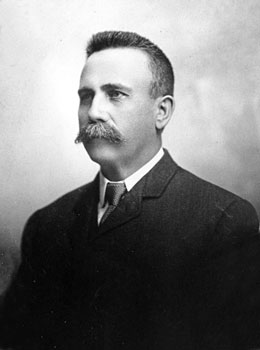
Oscar H. Will SHSND# 0029-001Oscar H. Will, the Bismarck seed and nursery horticulturist, recognized the hardiness of corn raised at Fort Berthold and sought seeds in 1882. This seed, after crossed with some other varieties, became the foundation of Gehu field corn. While field corn strays from the focus of this research, it is well-noted that the garden corn of the Hidatsa Indian women became the foundation corn for a major American industry. (Will, Corn, p. 27-28) Will also developed dry beans from Hidatsa varieties, and sold squash seed from this source for home gardens in his catalog for many years.
In a simplified scenario, corn was adapted for cultivation and use by European American farmers who became successful in supporting their families on the northern Great Plains. Their political and economic needs dominated those of non-white cultures in ND, and Indian traditions were re-shaped to meet these changes.
The building of the dam on the Missouri River flooded the bottomland gardens of the Hidatsa, Mandan, and Arikara by 1956. (Hidatsa, p. 92)




